2,3-戊二酮,2,3-Pentanedione,97%
产品编号:Sigma-241962| CAS NO:600-14-6| MDL NO:MFCD00009313| 分子式:C5H8O2;CH3CH2COCOCH3| 分子量:100.12
2,3-Pentanedione 是合成香料的一种常见成分,用于在饮料、冰淇淋、糖果、烘焙食品、明胶和布丁中提供黄油、草莓、焦糖、水果、朗姆酒或奶酪的香味。2,3-Pentanedione 也作为发酵产物自然存在于啤酒、葡萄酒和酸奶中,并在咖啡豆烘焙过程中释放。
本网站销售的所有产品仅用于工业应用或者科学研究等非医疗目的,不可用于人类或动物的临床诊断或者治疗,非药用,非食用,
| 产品名称 | 2,3-戊二酮 | ||||||||||||||||
|---|---|---|---|---|---|---|---|---|---|---|---|---|---|---|---|---|---|
| 英文名称 | 2,3-Pentanedione | ||||||||||||||||
| CAS编号 | 600-14-6 | ||||||||||||||||
| 产品描述 | 2,3-Pentanedione 是合成香料的一种常见成分,用于在饮料、冰淇淋、糖果、烘焙食品、明胶和布丁中提供黄油、草莓、焦糖、水果、朗姆酒或奶酪的香味。2,3-Pentanedione 也作为发酵产物自然存在于啤酒、葡萄酒和酸奶中,并在咖啡豆烘焙过程中释放。 | ||||||||||||||||
| 产品熔点 | -52 °C | ||||||||||||||||
| 产品沸点 | 108.0±0.0 °C at 760 mmHg | ||||||||||||||||
| 产品密度 | 1.0±0.1 g/cm3 | ||||||||||||||||
| 产品闪点 | 18.9±0.0 °C | ||||||||||||||||
| 精确质量 | 100.052429 | ||||||||||||||||
| PSA | 34.14000 | ||||||||||||||||
| LogP | -0.80 | ||||||||||||||||
| 外观性状 | 透明至黄色液体 | ||||||||||||||||
| 蒸气压 | 26.4±0.2 mmHg at 25°C | ||||||||||||||||
| 折射率 | 1.395 | ||||||||||||||||
| 溶解性 | 60 g/L (15 ºC) | ||||||||||||||||
| 溶解性数据 | In Vitro:
DMSO : 100 mg/mL (998.80 mM; Need ultrasonic) 配制储备液
*
请根据产品在不同溶剂中的溶解度选择合适的溶剂配制储备液;一旦配成溶液,请分装保存,避免反复冻融造成的产品失效。 In Vivo:
请根据您的实验动物和给药方式选择适当的溶解方案。以下溶解方案都请先按照 In Vitro 方式配制澄清的储备液,再依次添加助溶剂:
——为保证实验结果的可靠性,澄清的储备液可以根据储存条件,适当保存;体内实验的工作液,建议您现用现配,当天使用;
以下溶剂前显示的百
| ||||||||||||||||
| 稳定性 | 1.性质与稳定性:常温常压下,或不分解产物。 2.黄色液体。广泛存在于多种食品中家禽、家畜奶乳、焙烤类坚果炸土豆、面包、浆果番茄,饮料的可可、茶叶,酒精饮料中啤酒各种洋酒都有此成分存在,某些精油也发现其存在,该化合物为丁二酮的类似系列产品,乳脂奶香为其主要特有风格,溶于水中,又有微甜的味道。 3. 存在于主流烟气中。 | ||||||||||||||||
| 储存条件 | 贮存: 将密器密封,储存密封的主藏器内,并放在阴凉, 干爽的位置。 |
相关文档
化学品安全说明书(MSDS)
下载MSDS质检证书(COA)
相关产品
| 符号 |
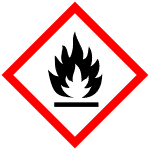

GHS02, GHS07 |
|---|---|
| 信号词 | Danger |
| 危害声明 | H225-H315-H319-H335 |
| 警示性声明 | P210-P261-P305 + P351 + P338 |
| 个人防护装备 | Eyeshields;Faceshields;full-face respirator (US);Gloves;multi-purpose combination respirator cartridge (US);type ABEK (EN14387) respirator filter |
| 危害码 (欧洲) | F:Flammable |
| 风险声明 (欧洲) | R11;R36/37/38 |
| 安全声明 (欧洲) | S16-S26-S36-S37/39 |
| 危险品运输编码 | UN 1224 3/PG 2 |
| WGK德国 | 1 |
| RTECS号 | SA1850000 |
| 包装等级 | II |
| 危险类别 | 3 |
| 海关编码 | 2914190090 |
Synonym:Acetylpropiony Section 2 - COMPOSITION, INFORMATION ON INGREDIENTS
Risk Phrases: 11 Section 3 - HAZARDS IDENTIFICATION EMERGENCY OVERVIEW
Highly flammable. Potential Health Effects Eye: May cause eye irritation and possible burns. Skin: Causes skin irritation and possible burns. Ingestion: May cause digestive tract disturbances. Inhalation: May cause respiratory tract irritation. Vapors may cause dizziness or suffocation. Chronic: No information found. Section 4 - FIRST AID MEASURES Eyes: Flush eyes with plenty of water for at least 15 minutes, occasionally lifting the upper and lower eyelids. Get medical aid immediately. Skin: Get medical aid. Flush skin with plenty of water for at least 15 minutes while removing contaminated clothing and shoes. Remove contaminated clothing and shoes. Ingestion: If victim is conscious and alert, give 2-4 cupfuls of milk or water. Never give anything by mouth to an unconscious person. Get medical aid immediately. Inhalation: Remove from exposure and move to fresh air immediately. If not breathing, give artificial respiration. If breathing is difficult, give oxygen. Get medical aid. Notes to Physician: Section 5 - FIRE FIGHTING MEASURES General Information: As in any fire, wear a self-contained breathing apparatus in pressure-demand, MSHA/NIOSH (approved or equivalent), and full protective gear. Vapors may form an explosive mixture with air. Vapors can travel to a source of ignition and flash back. During a fire, irritating and highly toxic gases may be generated by thermal decomposition or combustion. Will burn if involved in a fire. Use water spray to keep fire-exposed containers cool. Containers may explode in the heat of a fire. Flammable liquid and vapor. Vapors may be heavier than air. They can spread along the ground and collect in low or confined areas. Extinguishing Media: For small fires, use dry chemical, carbon dioxide, water spray or alcohol-resistant foam. For large fires, use water spray, fog, or alcohol-resistant foam. Water may be ineffective. Do NOT use straight streams of water. Cool containers with flooding quantities of water until well after fire is out. Section 6 - ACCIDENTAL RELEASE MEASURES General Information: Use proper personal protective equipment as indicated in Section 8. Spills/Leaks: Absorb spill with inert material (e.g. vermiculite, sand or earth), then place in suitable container. Avoid runoff into storm sewers and ditches which lead to waterways. Clean up spills immediately, observing precautions in the Protective Equipment section. Remove all sources of ignition. Use a spark-proof tool. Provide ventilation. A vapor suppressing foam may be used to reduce vapors. Water spray may reduce vapor but may not prevent ignition in closed spaces. Section 7 - HANDLING and STORAGE Handling: Wash thoroughly after handling. Use with adequate ventilation. Ground and bond containers when transferring material. Use spark-proof tools and explosion proof equipment. Avoid contact with eyes, skin, and clothing. Empty containers retain product residue, (liquid and/or vapor), and can be dangerous. Keep away from heat, sparks and flame. Avoid ingestion and inhalation. Do not pressurize, cut, weld, braze, solder, drill, grind, or expose empty containers to heat, sparks or open flames. Storage: Keep away from heat, sparks, and flame. Keep away from sources of ignition. Store in a cool, dry, well-ventilated area away from incompatible substances. Refrigerator/flammables. Keep containers tightly closed. Section 8 - EXPOSURE CONTROLS, PERSONAL PROTECTION Engineering Controls: Use adequate ventilation to keep airborne concentrations low. Exposure Limits CAS# 600-14-6: Personal Protective Equipment Eyes: Wear appropriate protective eyeglasses or chemical safety goggles as described by OSHA's eye and face protection regulations in 29 CFR 1910.133 or European Standard EN166. Skin: Wear appropriate protective gloves to prevent skin exposure. Clothing: Wear appropriate protective clothing to prevent skin exposure. Respirators: Follow the OSHA respirator regulations found in 29 CFR 1910.134 or European Standard EN 149. Use a NIOSH/MSHA or European Standard EN 149 approved respirator if exposure limits are exceeded or if irritation or other symptoms are experienced. Section 9 - PHYSICAL AND CHEMICAL PROPERTIES Physical State: Liquid Color: clear yellow Odor: None reported. pH: Not available. Vapor Pressure: Not available. Viscosity: Not available. Boiling Point: 110.0 - 112.0 deg C Freezing/Melting Point: -52 deg C Autoignition Temperature: Not available. Flash Point: 18 deg C ( 64.40 deg F) Explosion Limits, lower: Not available. Explosion Limits, upper: Not available. Decomposition Temperature: Solubility in water: partially soluble Specific Gravity/Density: .9570g/cm3 Molecular Formula: C5H8O2 Molecular Weight: 100.12 Section 10 - STABILITY AND REACTIVITY Chemical Stability: Stable under normal temperatures and pressures. Conditions to Avoid: Incompatible materials, ignition sources, excess heat, strong oxidants. Incompatibilities with Other Materials: Strong oxidizing agents. Hazardous Decomposition Products: Carbon monoxide, carbon dioxide, acrid smoke and fumes. Hazardous Polymerization: Has not been reported. Section 11 - TOXICOLOGICAL INFORMATION RTECS#: CAS# 600-14-6: SA1850000 LD50/LC50: CAS# 600-14-6: Draize test, rabbit, skin: 500 mg/24H Moderate; Oral, rat: LD50 = 3 gm/kg; Skin, rabbit: LD50 = >2500 mg/kg. Skin, Rabbitt:LD50 = >2500 Carcinogenicity: 2,3-Pentanedione - Not listed by ACGIH, IARC, or NTP. Other: See actual entry in RTECS for complete information. Section 12 - ECOLOGICAL INFORMATION Section 13 - DISPOSAL CONSIDERATIONS Dispose of in a manner consistent with federal, state, and local regulations. Section 14 - TRANSPORT INFORMATION IATA Shipping Name: FLAMMABLE LIQUID, N.O.S.* Hazard Class: 3 UN Number: 1993 Packing Group: II IMO Shipping Name: FLAMMABLE LIQUID, N.O.S. Hazard Class: 3.2 UN Number: 1993 Packing Group: II RID/ADR Shipping Name: FLAMMABLE LIQUID, N.O.S. Hazard Class: 3 UN Number: 1993 Packing group: II Section 15 - REGULATORY INFORMATION European/International Regulations European Labeling in Accordance with EC Directives Hazard Symbols: F Risk Phrases: R 11 Highly flammable. Safety Phrases: S 9 Keep container in a well-ventilated place. S 16 Keep away from sources of ignition - No smoking. S 33 Take precautionary measures against static discharges. S 50A Do not mix with acids. WGK (Water Danger/Protection) CAS# 600-14-6: 1 Canada CAS# 600-14-6 is listed on Canada's DSL List. CAS# 600-14-6 is not listed on Canada's Ingredient Disclosure List. US FEDERAL TSCA CAS# 600-14-6 is listed on the TSCA inventory. SECTION 16 - ADDITIONAL INFORMATION N/A |
| 上游产品 7 | |
|---|---|
| 下游产品 10 | |

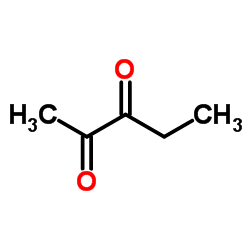
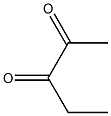


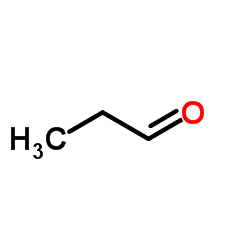


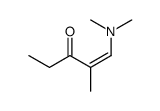

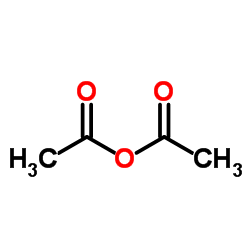
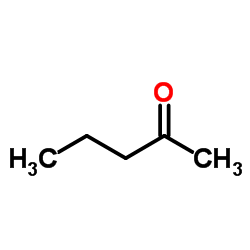
![2-[(E)-[(2Z)-2-(diaminomethylidenehydrazinylidene)pentan-3-ylidene]amino]guanidine结构式](/20230522/106119-98-6.png)

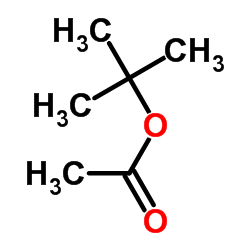



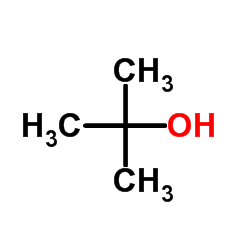
![[(Z)-[(2E)-2-(carbamothioylhydrazinylidene)pentan-3-ylidene]amino]thiourea结构式](/20230522/18667-57-7.png)
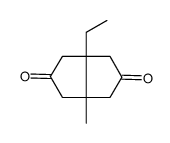
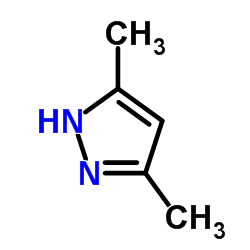





 浙公网安备 33010802013016号
浙公网安备 33010802013016号